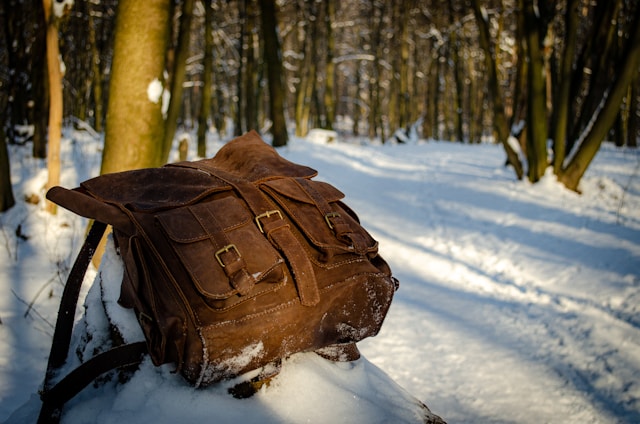Hey everyone, Anya here! As much as I love the warmth of summer, there’s something incredibly serene about packrafting in the colder months. The crisp air, the quiet waterways…it’s magical. But let’s be real, cold weather packrafting demands respect. Forget to prep correctly, and that magic can quickly turn into a survival situation. So, let’s dive into how to stay safe and toasty out there, shall we?
Layering Like a Pro
Layering. It’s not just a fashion statement for fall; it’s your lifeline in cold weather packrafting. Think of it as your personal climate control system. Start with a moisture-wicking base layer – merino wool or synthetic fabrics are your best friends here. Avoid cotton like the plague; it’ll just soak up moisture and leave you shivering. Next, add an insulating layer, like fleece or a down jacket. And finally, top it off with a waterproof and windproof outer shell. This is where a good drysuit really shines, but we’ll get to that in a bit.
Choosing the Right Clothing
Alright, let’s get specific about clothing choices. For your base layer, I’m a huge fan of merino wool. It keeps you warm even when wet, and it doesn’t stink after a few days of use (trust me, that’s a big plus). Fleece jackets are great for insulation, and a down jacket can provide serious warmth when you’re taking a break. As for your outer layer, a drysuit is the gold standard for cold water packrafting. It’ll keep you completely dry, which is crucial for staying warm. But if a drysuit isn’t in your budget, a good quality waterproof jacket and pants can also work, just be extra careful to avoid getting wet. And don’t forget about your extremities! Neoprene gloves and a warm hat are essential for keeping your hands and head warm. I also like to wear neoprene socks inside my waterproof boots for added insulation. Basically, dress like you’re expecting to fall in, because, well, you might!
Hypothermia: Know the Signs, Act Fast
Hypothermia is no joke, folks. It can sneak up on you quickly, especially in cold water. So, let’s get serious. Know the signs: shivering, confusion, slurred speech, and fatigue. If you notice any of these symptoms in yourself or a paddling buddy, take immediate action. Get the person out of the water, remove any wet clothing, and wrap them in warm, dry layers. A hot drink and some high-energy snacks can also help. If symptoms don’t improve or if the person loses consciousness, call for help immediately. Time is of the essence here.
Cold-Water Safety Techniques
Okay, so you’re dressed appropriately, and you know the signs of hypothermia. But what happens if you actually end up in the water? First of all, don’t panic! Easier said than done, I know, but panic will only make things worse. Focus on getting back into your packraft as quickly as possible. Practice wet exits and re-entries in a safe environment, like a calm lake, before you head out on a more challenging trip. If you can’t get back in, try to stay calm and float on your back, keeping your head above water. Use your paddle for support and try to paddle towards shore. Remember, every movement expends energy, so try to conserve your strength as much as possible. This is where a PFD (personal flotation device) is an absolute must. I wouldn’t even consider getting on the water without one. It’s not just a good idea; it’s a lifesaver.
While you are at it, make sure you are packing for packrafting! The biggest difference between whitewater safety gear for frontcountry boating (e.g., kayaking, rafting) and packrafting is weight, so make sure your gear is light!
Planning is Key
Before you even think about dipping a paddle in the water, do your homework. Check the weather forecast, research the water conditions, and be aware of any potential hazards. Tell someone where you’re going and when you expect to be back. And most importantly, be honest with yourself about your abilities. Cold weather packrafting is not the time to push your limits. Start with shorter, easier trips and gradually work your way up to more challenging adventures. And remember, it’s always better to err on the side of caution. If the conditions don’t feel right, don’t be afraid to turn back. I’ve had to cut trips short due to weather more than once, and you know what? I’m still here to tell the tale.
APA’s P.A.C.K.R.A.F.T. Safety Code is a clear reminder of 8 things you need to consider before heading out on a trip. Create a trip plan and discuss it with everyone ahead of time. Share details with an emergency contact who is not on the trip. Choose a trip within the team’s ability and adapt as needed.
Final Thoughts
Packrafting in cold weather can be an amazing experience, but it’s essential to be prepared. Layer up, know the signs of hypothermia, practice cold-water safety techniques, and plan your trip carefully. Stay warm, stay safe, and enjoy the adventure! And hey, if you have any cold weather packrafting tips of your own, share them in the comments below. I’m always looking for new ways to improve my game.
Happy paddling!
-Anya




